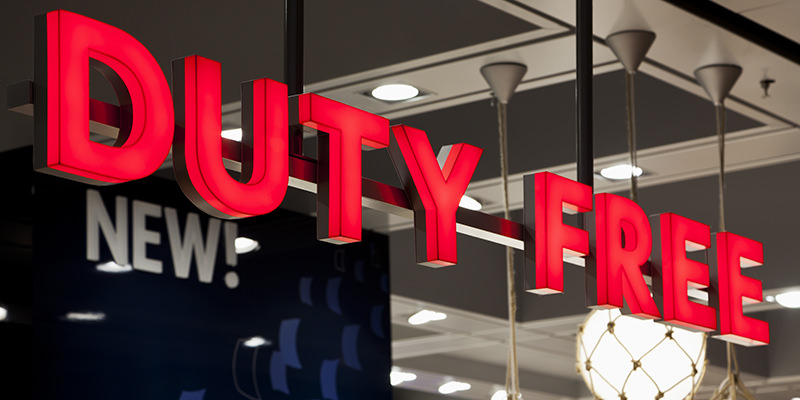Some of us give ourselves a razor-thin 30-minute margin to check in, get through security, and board an airplane. (Maybe a quick whiskey before you hit your gate.) But there are others among us, experienced fliers, who like to give themselves a bigger cushion of time between arrival and takeoff. Not so they can make that whiskey a double, or explore the airport for mediocre art installations. They want extra time before a flight for one thing: shopping. (Sometimes we all like to stop at the duty free shop…)
Yes, the candy bars and bottled water may be egregiously overpriced, but there’s one way airport retail saves you money: the duty free shop. Whether we’re in it for the perfume, the jewelry, a carton of cigarettes or—ah, yes—the alcohol, the duty free airport shops give us purchasing power without the added burden of taxation. (Money we can put toward a bonus carton of cigarettes.)
So just where do duty free shops come from? Easy, albeit totally unexpected, answer: Ireland. The duty free shop is actually an invention of the mid 20th Century. For fairly obvious reasons, World War II had put kind of a damper on international travel. But once the war was over, civilians began traveling internationally again. One of their stop-overs was the airport in Shannon, Ireland, where a man named Brendan O’Regan worked as a “catering comptroller” (which is a much cooler way of saying he ran the finances for airport catering).
O’Regan noticed that, while on layover in his airport, people liked to shop. In the aftermath of WWII, plenty of countries were in need of a significant revenue source, so O’Regan got an idea: why not incentivize airport-specific shopping by making the goods on offer totally tax free? But how exactly to get around those pesky national laws about taxing goods and services? Easy. Just ask the Irish government to declare Shannon airport outside of—as in not a part of—Ireland. They did so, and with that, O’Regan inaugurated the era of duty free.
Of course, he couldn’t make that decision for every country in the world, so O’Regan brought his proposal to the New York Convention on International Travel in 1954, where everyone could decide on the particular duty-free rules.
By the 1960s, duty free had come to America, courtesy of two guys: Chuck Feeney and Robert Miller, founders of Duty Free Shops. DFS got its foot in the door in Hong Kong, finally hitting American soil with an exclusive contract for all duty free sales in Hawaii.
Now duty free shopping is as much a part of air travel as weird Sky Mall purchases and those tiny cans of V8 (why do people only drink V8 at 36,000 feet above ground?). And there’s good reason to check it out, even if you’re not a big shopper. If, like us, you enjoy a nice glass of alcohol every now and then, you should know that as US citizens traveling internationally, liquor is discounted anywhere from 25% to 50%. Before you load up on Scotch and Cognac, bear in mind there’s an $800 monthly limit ($1,600 if the whole family wants to get in on the luxury liquor spree).
Considering how many liquor and wine brands DFS alone carries, there’s a chance you would hit that cap pretty easily—except (and here’s the rub), everyone is actually also limited to 1 liter of alcohol. So make it a good one.

